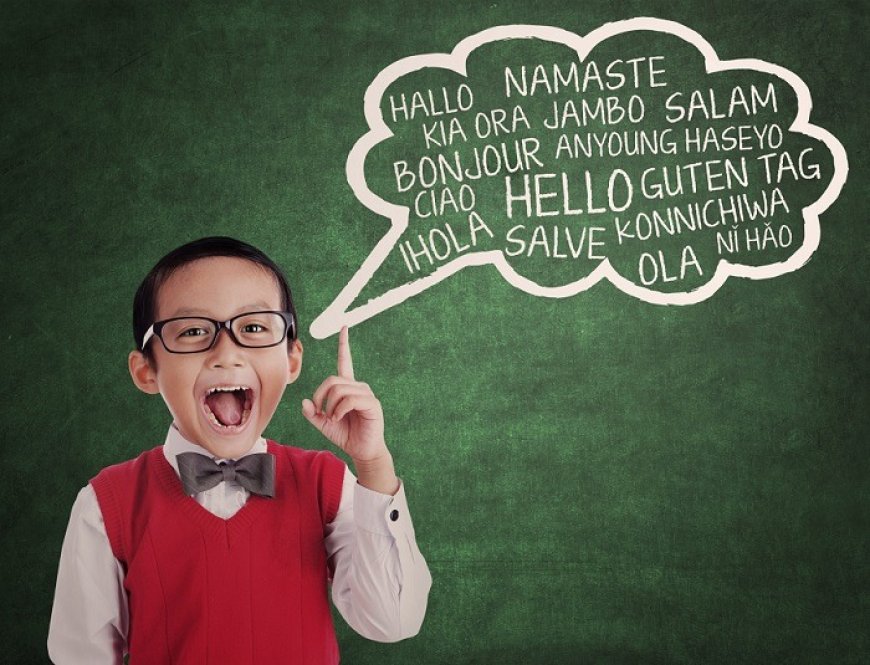Bilingualism - learn about its advantages and conditions
From the psychology of language point of view, bilingualism is something very positive. However, people didn't always think that.

From the psychology of language point of view, bilingualism is something very positive. However, people didn't always think that. Until the 1960s, people believed that it was an obstacle to the intellectual development of children. It was felt that they had to translate everything they heard and read in both languages ‹‹simultaneously and that this was a waste of time and effort.
However, it has been proven that, rather than harming our learning process, bilingualism actually benefits it. The advantages of bilingualism are obvious not only in children but also in adults. Additionally, learning a new language slows down cognitive decline.
The emergence of bilingualism
Historical and cultural factors contributed to the increase in bilingualism. More specifically, these factors are related to the opening and the establishment of new borders between countries, such as:
- Territorial expansion of some nations and cultures. This was the case with Latin, the spread of which has exponentially increased the number of bilingual speakers of this thousand-year-old language.
- Political reunification by consensus to facilitate communication of the lingua franca. For example, English has been established as the scientific language par excellence.
- articalcolonial situations also contributed to the colonizers imposing their language on conquered places that had to adopt a language other than their mother tongue.
- People moving to another country must learn the language of the place where they live.
- Cosmopolitanism has led to the rise of bilingual brokers or traders.
The importance of the mother
The relationship between mother and child is a prototype of the parity of communicative exchange. For many months, the mother interprets the signals sent by the baby (cry, scream, laugh) and translate it into words.
Gradually, the adult begins to become a kind of mirror for the child. When she makes the gesture, the child tries to imitate her. Thus, a social exchange begins to develop that helps the child to understand and gradually, without limitations, expand his knowledge of the world.
Therefore, the interaction between mother and child is what determines the appearance of language and its level in the child. The types of communication interactions produced between mother and baby are constantly changing and evolving as the baby grows.
Types of bilingualism
There are two key aspects to the development of bilingualism in children: their environment and the stage of maturation they find themselves in. Accordingly, there are two types of bilingualism:
- Simultaneous: the child learns two language systems at the same time. As a rule, this is the case when the parents speak two other languages ‹‹on a daily basis.
- Another: the child has access to only one language during childhood. After mastering it, they learn a second language. For example, English lessons at school.
Proper bilingualism is very difficult to achieve. There is always a language that is more developed and has more meaning than others. The more similar the mother tongue and the foreign language are, the easier and faster the learning process will be.
Factors and determinants of bilingualism
There was a study of six-month-old babies that used filtering techniques to prove early pre-qualification for bilingualism. The conclusions were surprising. When children are only six months old, they can distinguish their first language from a foreign one.
This does not mean that they are able to distinguish the phonetic details of the language. However, they know how to distinguish prosodic information (intonation, rhythm). This makes 6-month-old babies potentially polyglot. Remember that this ability decreases with age as it is not considered an essential survival skill.
Positive bilingualism
According to researcher, a number of social, cognitive and linguistic circumstances must be provided for bilingualism to be positive for the child:
- Reaching a high and sufficient level of knowledge in two languages.
- Good first language development and learning a second language system at school.
- High expectations and positive attitude of the child's relatives and teachers with regard to their integral development.
- Good social prestige in both languages.
The cognitive benefits of bilingualism
According to numerous studies, the prefrontal and dorsolateral cortex of children who are fluent in two languages ‹‹are more developed in terms of executive functions. As a result, they can be quick and efficient in the specific tasks in which they need these above-average skills.
Additionally, they tend to better distinguish environmental stimuli, which makes it easier for them to ignore noise in the classroom. This way it is easier for them to focus on what they are learning. They also tend to have a larger brain control mechanism that allows them to "moderate the effects of age" by delaying their intellectual deterioration.
As you can see, the benefits of speaking more than one language are not limited to linguistics. The possibility of successful development in an intercultural and multilingual environment is the result of knowing how to take advantage of the adaptation possibilities that nature offers us.
